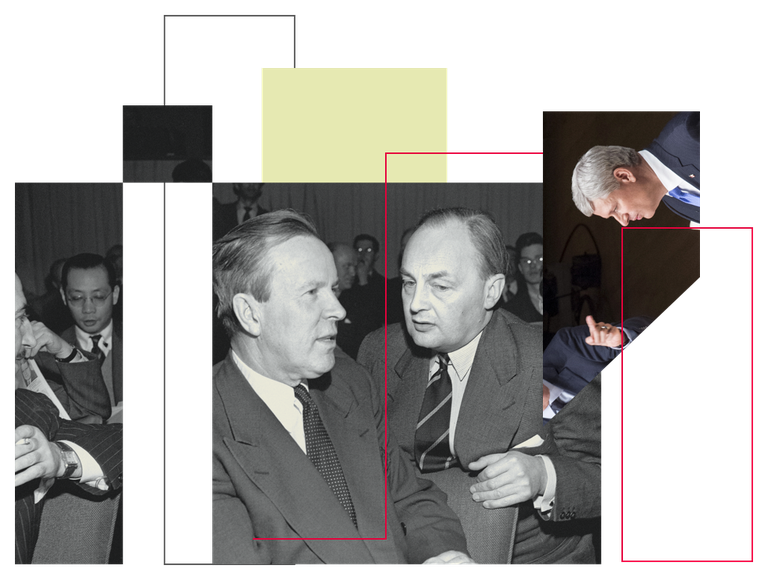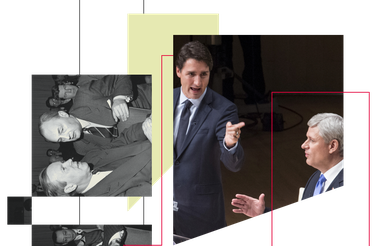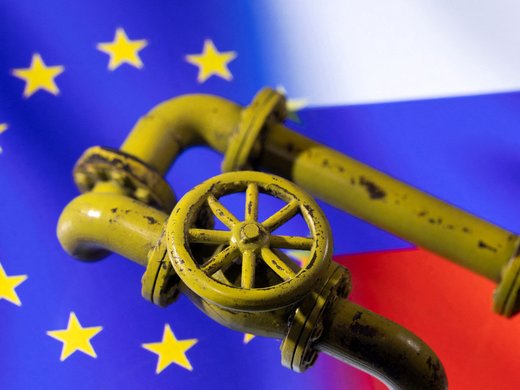Multilateralism, it seems, is in crisis. The world’s multilateral institutions have proven ill equipped to handle new challenges such as the COVID-19 pandemic and attempts by the great powers to use these institutions (when they use them at all) for competition rather than cooperation. As Canada faces a fractious and uncertain international system, a brief historical review since 1945 of the highlights of what political scientist Tom Keating (2013) has called the “multilateralist tradition” in Canadian foreign policy is timely.
The idea of such a tradition may seem odd. Too small to impose its will on the world, what choice does Canada have but to collaborate with other countries? But its historic commitment to multilateralism, both broad and deep, makes that word appropriate. It in no way diminishes that other venerable tradition in Canadian foreign policy: bilateralism with the United States, the importance of which no Canadian government can afford to ignore. Yet it was partly Canada’s fear of domination by the United States, particularly after 1945, that led to a more extensive engagement with the world. Multilateralism became a counterweight to continentalism. Canadian leaders also recognized that harmonious global relations were clearly in Canada’s best interest.
The Second World War laid the foundation of the Canadian multilateralist tradition. Spared attack at home, Canada emerged from the war with a robust economy and the world’s third-largest navy and fourth-largest air force. Casting off the quasi-isolationism of the pre-war period, in 1947 Canadian foreign minister Louis St. Laurent declared, “There now rests with us the opportunity to show the same degree of competence, the same readiness to accept responsibilities, the same sense of purpose in the conduct of our international affairs” (St. Laurent 1947). Motivated by a desire to prevent another Great Depression or world war, Canada, a self-proclaimed middle power, joined with other countries to build a more prosperous and secure world based on multilateral institutions and common rules.
Canadian policy makers thus became active (if junior) architects of the rules-based international order that emerged. They were present, for example, at the Bretton Woods conference of 1944 that created the World Bank and the International Monetary Fund. Similarly, they were heavily involved in the drafting of the 1947 General Agreement on Tariffs and Trade (GATT), whose original 23 signatories pledged to work to eliminate trade barriers among themselves, a welcome departure from the beggar-thy-neighbour policies that had prolonged the Great Depression. Canada was also a founding member of the United Nations, having succeeded at the San Francisco Conference of 1945 in strengthening the socioeconomic aspects of that organization’s charter. When it became clear, however, that the United Nations' collective security role would be jeopardized by the emerging Cold War between the United States and the Soviet Union, Canadian diplomats strongly supported the establishment of the more regionally focused North Atlantic Treaty Organization (NATO). While hardly a new institution, the British Commonwealth was also a major factor in postwar Canadian foreign policy. For example, Canadian foreign minister Lester B. Pearson (St. Laurent was now prime minister) helped transform the Commonwealth into a multiracial organization by successfully promoting a compromise that allowed newly independent India to join its ranks as a republic.
If multilateralism made Canada a citizen of the world after 1945, the country was most at home in the Western camp, which it sought to strengthen. While reluctant publicly to criticize the United States, the undisputed leader of the Western alliance, Canadian diplomats worked behind the scenes in multilateral fora to moderate certain American positions. Its economy booming, Canada engaged in a huge military buildup in response to the United Nations’ call for assistance during the Korean War. Ottawa also stationed an infantry brigade and an air division in Western Europe to help NATO defend against the Soviet menace. The importance of alliance solidarity was dramatized by Pearson’s key role at the United Nations in 1956 in defusing the Suez Crisis by proposing a United Nations Emergency Force to keep the peace. Pearson may have “saved the world,” according to the Nobel Committee that awarded him its Peace Prize for 1957, but his chief aim had been to repair the rift created within both NATO and the Commonwealth by Britain and France’s ill-advised invasion of Egypt over its nationalization of the Suez Canal. Although some criticized Pearson for not supporting “Mother England,” his peacekeeping initiative at the United Nations captured the imagination of many Canadians — both then and since.
While reluctant publicly to criticize the United States, the undisputed leader of the Western alliance, Canadian diplomats worked behind the scenes in multilateral fora to moderate certain American positions.
The Progressive Conservative victory in the 1957 Canadian election did not alter the main tenets of postwar Canadian foreign policy. “In international affairs generally,” reported one foreign diplomat in Ottawa, “[the Tories] are almost pathologically conscious of the shadow of Mr. Pearson and have in the main been content to continue the policies of the previous Government” (quoted in Kelly 2019, 107). When the UN Secretary-General appealed for peacekeepers for a mission in the Congo, the government of John Diefenbaker found itself pressured into participating by Canadians who saw peacekeeping as part of their identity. An anglophile who admired the Commonwealth, Diefenbaker helped preserve that institution’s multiracial character when he became the only white leader to oppose apartheid, and thus the readmission of South Africa, at the 1961 Commonwealth Prime Ministers’ Conference. The next year, he rallied Commonwealth members against Britain’s potential “abandonment” of the organization for the European Economic Community. A cold warrior, Diefenbaker discovered that the US-led Western alliance occasionally entailed uncomfortable responsibilities, such as Canadian acceptance of nuclear weapons for both the defence of North America and — under NATO — Western Europe. His waffling on this issue exasperated Canada’s allies, ultimately precipitating the fall of his government.
When the Liberals returned to power in 1963, many Canadians expected Pearson, now prime minister, to increase Canada’s international profile. But Canada’s place in the world had changed. With the economic recovery of Western Europe and Japan, and a host of new countries at the United Nations, Canada’s international influence was reduced. The postwar consensus on Canadian foreign policy collapsed in the 1960s over the US war in Vietnam and NATO’s reliance on nuclear weapons (which Pearson had agreed to accept). “Quiet diplomacy,” which had served Canadian multilateral and bilateral diplomacy so well for so long, became a term of disparagement, as critics called for a more “independent” stance.
Still, Canadian multilateralism was not unproductive in this period. By playing a leading role in the establishment of a UN peacekeeping force on the island of Cyprus, where sectarian violence risked provoking war between NATO allies Greece and Turkey, Canada bolstered not only NATO but also the United Nations, which was mired in a stultifying debate over the authorization and financing of such missions. Within the Commonwealth, Pearson negotiated a compromise between Britain and the African, Asian and Caribbean states over the appropriate response to the unilateral declaration of independence by the self-governing British territory of Rhodesia (now Zimbabwe), whose white minority government clung to power as Africa decolonized. In NATO, Canadian diplomats, having always resisted the organization’s overwhelmingly military focus, pushed for a re-examination of its goals, a process that resulted in the conclusion reached by the 1967 Harmel Report that NATO should focus as much on peace with the Soviet bloc as on defence against it.
In 1968, the new prime minister, Pierre Trudeau, promised a severe reassessment of postwar Canadian foreign policy, which he criticized for subservience to NATO and for unrealistic notions of Canada as a “helpful fixer” or “honest broker” in the world. On peacekeeping, Trudeau declared that Canada was not the world’s policeman. Desiring a foreign policy more in the national interest, he halved the number of Canadian NATO forces in Europe. A retired Pearson grumbled privately that genuine national interest involved “co-operation with others…leading to a world order which promotes freedom, well-being and security for all” (quoted in Bothwell 2007, 293). Canada, it seemed, was shunning multilateralism.
In fact, the Trudeau government was neither inclined nor able to do so. Its 16 years in power were marked more by continuity than change in foreign policy. For instance, despite his zany slide down a banister at his first Commonwealth conference, Trudeau quickly came to respect the serious informal conversations such gatherings made possible with leaders of what was then referred to as the Third World. He also warmed to NATO. Tangible commitments to the organization — such as the purchase of new military equipment for Canadian forces in Europe — could help secure European support for Canadian efforts to diversify its trade beyond the United States (the so-called “Third Option”). While Trudeau generally avoided the United Nations, whose long-winded debates bored him, his government sympathized with its initiatives to reduce inequality between First World and Third World countries. Canada also participated in every UN peacekeeping mission in this period. In major international negotiations in the 1970s, such as the Conference on Security and Co-operation in Europe and the third UN Conference on the Law of the Sea, Canadian diplomats were active participants. When Canada was admitted to the exclusive and newly formed Group of Six major industrialized nations in 1976, making it the Group of Seven (G7), Trudeau even developed a taste for summitry.
When Brian Mulroney became prime minister in 1984, his Progressive Conservative government promised “super relations” with the superpower to the south. His signature international achievement was the Canada-US Free Trade Agreement of 1989, which Canadians had endorsed in a contentious election on the theme of Canadian independence. Because free trade was so dominant an issue, Canada appeared to be abandoning multilateralism for bilateralism, eschewing the world for North America.
Instead, the Mulroney government continued the postwar Canadian approach of balancing an increasingly close relationship with the United States with ever broader global engagement. Mulroney pushed for economic sanctions against South Africa during apartheid at the Commonwealth, at the United Nations and at the G7. Canada became a founding member of the Asia-Pacific Economic Cooperation forum and finally joined the Organization of American States. Compromise between Ottawa and Quebec on the controversial question of provincial participation in la Francophonie facilitated the first of that international organization’s biannual summits.
When the Cold War came to a surprisingly abrupt end, Canada cashed in its “peace dividend” by withdrawing its forces from Europe, even though this step weakened its voice in NATO. Still, the government did not hesitate to commit Canada to the UN military coalition assembled by the United States to liberate Kuwait from Iraqi invasion. Some Canadians feared that the country’s involvement in such “muscular multilateralism,” despite the Gulf War’s legal sanction by the Security Council, compromised Canadian peacekeeping, but the Mulroney government was active here too, supporting UN missions in places such as Somalia and the former Yugoslavia. Mulroney also took a personal interest in the United Nations’ work on the environment and on the welfare of children.
Nonetheless, the early 1990s were marked by uncertainty in Canadian multilateralism as Canada struggled to find its place in a world no longer defined by the Cold War. In an era of trade liberalization, the new Liberal government of Jean Chrétien ratified the previously negotiated North American Free Trade Agreement, sent bilateral “Team Canada” trade missions abroad and joined the World Trade Organization (which replaced GATT). To some, Canadian foreign policy seemed merely a quest for the almighty dollar.
The early 1990s were marked by uncertainty in Canadian multilateralism as Canada struggled to find its place in a world no longer defined by the Cold War.
The Chrétien government honoured the peacekeeping commitments it inherited in Somalia, the former Yugoslavia and Rwanda, but, as it turned out, there was no peace there to keep. Traditional peacekeeping, establishing a buffer between two sides (usually countries) after a conflict, struggled to handle violence within failed or fragile states. The international community’s tragic inability to prevent the Rwandan genocide popularized the concept of human — as distinct from state — security. Drawing on Canada’s “soft power,” that is, its ability to persuade, Canadian foreign minister Lloyd Axworthy made the human security agenda his own. Determined to reform a world sorely in need of it, Axworthy was willing to work outside the United Nations to obtain action. As a result, Canada forged an impressive alliance between like-minded states and civil society groups that led to such achievements as the Ottawa Treaty banning anti-personnel landmines and the establishment of the International Criminal Court, although the United States, Russia and China remained conspicuously absent from both. Creative as Canadian multilateralism was in this period, there was a cognitive dissonance between Axworthy’s bold positioning of Canada as a major player on the world stage and the deep cuts the deficit-slaying Chrétien government had made to Canadian diplomacy, development assistance programs and defence. As one disapproving academic put it, Canada was engaging in “pinchpenny diplomacy” (Nossal 1999). Nevertheless, marshalling its limited hard power in the name of human security, the country played a major role in NATO’s bombing campaign of Serbian forces in Kosovo.
The US response to the terrorist attacks of September 11, 2001, challenged Canadian multilateralism in new ways. With other NATO allies, Canada helped the Americans overthrow the Taliban government in Afghanistan. In the new “war on terror,” however, the US administration of George W. Bush was more focused on Saddam Hussein’s Iraq, which it insisted possessed weapons of mass destruction (WMDs). The Chrétien government argued that Canada’s participation in such a war required the multilateral support of the United Nations, where Canadian diplomats sought to buy weapons inspectors more time to find the alleged WMDs. Determined to invade Iraq no matter what, the United States, Britain and a “coalition of the willing” simply bypassed the United Nations. The Chrétien government’s refusal to participate in the Iraq War, undoubtedly its most important foreign policy decision, was popular with the Canadian public largely because it reaffirmed Canada’s commitment to multilateralism at a time when many Canadians were becoming uneasy with America’s increasing propensity to ignore international opinion. Nevertheless, as in 1956, a minority of Canadians expressed regret that Canada had not stood with its closest ally (or, in this case, allies).
One such Canadian was Stephen Harper. Following Paul Martin’s 26-month tenure as prime minister, marked by such initiatives as strong Canadian support at the United Nations for the new Responsibility to Protect (R2P) human security doctrine and the deployment of Canadian forces in Afghanistan under NATO to Kandahar, Harper formed a government in 2006. During its near decade in power, the Conservative Party professed to stand for a principled foreign policy that distinguished Canada’s friends from foes, and good from evil. Under Harper, Canadian multilateralism became highly selective. The government extended the country’s military mission in Afghanistan under NATO to 2014, participated in that organization’s air campaign against Muammar Gaddafi’s Libya, joined Canadian allies in fighting the Islamic State and vociferously condemned Russia’s annexation of Crimea. Harper’s strong interest in global economic governance and international trade, which were more important than ever following the Great Recession of 2008, led to his enthusiastic participation in such multilateral fora as the Group of Eight (G7 after Russia’s suspension) and Group of Twenty (created in 1999, thanks in part to the support of then Finance Minister Paul Martin) and to the aggressive pursuit of trade agreements, including the Trans-Pacific Partnership.
On the other hand, the Harper government was deeply skeptical of the United Nations. After Canada failed in 2010 to win election to a temporary seat on the UN Security Council, the prime minister declared that his country would “no longer just...go along and get along with everyone else’s agenda” or “please every dictator with a vote at the United Nations” (Harper, quoted in Chase 2011). Similarly, in other large multilateral institutions, such as the Commonwealth and La Francophonie, the government did not hesitate to boycott meetings or to criticize publicly member states that did not share Canada’s commitment to freedom, democracy and human rights. While supporters lauded the Harper government for having the courage of its convictions, critics charged that its “megaphone diplomacy” undermined a constructive engagement with other countries that, no matter how repulsive their governments, was the best way for a nation Canada’s size to exert influence.
When the Liberals defeated the Conservatives in the 2015 election, Prime Minister Justin Trudeau famously declared that Canada was “back” on the world stage. While it will be up to future historians to assess whether Canada is indeed back, or if it ever left, the Trudeau government has certainly given strong rhetorical support to a multilateral system under strain. That said, reports of multilateralism’s death have been greatly exaggerated. While the system may creak and groan under the weight of new pressures and challenges, and while its need for reform is universally acknowledged, it is still the world’s best option. The alternative — confrontation and the law of the jungle — is ultimately self-destructive, hence, no option at all. Seen in this light, Canadian leaders and policy makers can take pride in their country’s commitment to multilateralism over the last 75 years as they chart a path forward in the twenty-first century.
Author’s Note
The views expressed in this article are the author’s alone, and not those of either Global Affairs Canada or the Government of Canada.




